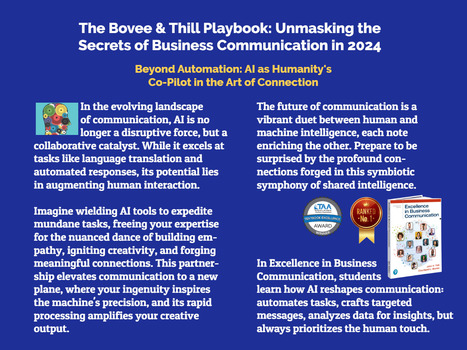
In the evolving landscape of communication, AI is no longer a disruptive force, but a collaborative catalyst.
Get Started for FREE
Sign up with Facebook Sign up with X
I don't have a Facebook or a X account
 Your new post is loading... Your new post is loading...
 Your new post is loading... Your new post is loading...
No comment yet.
Sign up to comment
|

Samantha Alanís's curator insight,
January 24, 1:02 AM
On the positive side, chatbots equipped with AI can provide instant support, answer queries, and offer personalized guidance to students, enhancing the overall learning experience :D This real time assistance can contribute to more efficient and accessible educational resources. |


